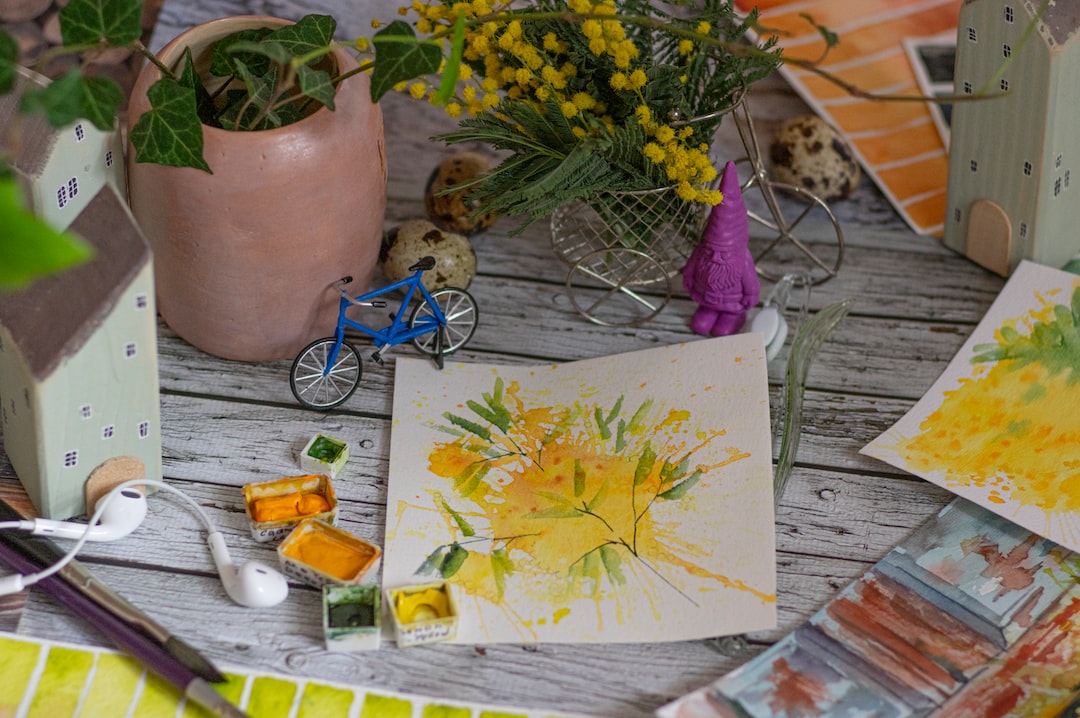Getting Started: A Beginner’s Guide to Painting
Painting is a creative and fulfilling hobby that allows you to express yourself and explore your artistic side. Whether you’re an absolute beginner with no prior experience or you’ve dabbled in painting before, this beginner’s guide will provide you with the necessary steps to get started on your painting journey.
1. Set Up Your Space: The first step in getting started with painting is to set up your painting space. Find a well-ventilated and well-lit area where you can work comfortably. Make sure to cover your workspace with a plastic or old cloth to protect it from any paint spills or accidents.
2. Gather Your Materials: The next step is to gather all the essential materials you’ll need for painting. This includes paintbrushes of various sizes, a palette, canvas or painting paper, a palette knife, and a set of paints. For beginners, it’s recommended to start with acrylic or watercolor paints as they are easy to work with and clean up.
3. Experiment with Different Techniques: Before diving into a full-fledged painting, take some time to experiment with different painting techniques. This will help you get familiar with your materials and understand how they behave on the canvas. Try techniques like blending, layering, dry brushing, and wet-on-wet to create different effects.
4. Start with a Simple Subject: When you’re ready to start your first painting, choose a simple subject to paint. This could be a still life arrangement, a landscape, or an object that holds personal significance. Starting with something simple will allow you to focus on the basic techniques without feeling overwhelmed.
5. Sketch Your Composition: Before painting, it’s a good practice to sketch your composition lightly on the canvas or paper. This will act as a guide for your painting and help you establish the proportions and placement of different elements. Use light pencil strokes to sketch your subject, making changes as needed until you’re satisfied with the composition.
6. Mix Your Colors: One of the exciting parts of painting is mixing your colors. Start with the primary colors – red, blue, and yellow – and experiment with mixing them to create a wide range of hues. Aim to mix colors that match your subject or create interesting color schemes. Remember to keep a clean palette knife or brush for mixing, as the colors can quickly become muddy if not managed properly.
7. Work in Layers: When it’s time to paint, start by blocking in the basic shapes and colors of your subject. Work in layers, allowing each layer to dry before applying the next. This will help you build up depth and detail in your painting. Don’t be afraid to make mistakes, as painting is a forgiving medium. You can always paint over areas or make adjustments as needed.
8. Practice Patience and Perseverance: Painting requires patience and perseverance. Don’t expect your first painting to be a masterpiece. Embrace the learning process and continue practicing. Each painting you create will teach you something new and help you improve your skills.
9. Seek Inspiration and Learn from Others: As a beginner, it’s essential to seek inspiration from other artists and learn from their techniques. Explore art galleries, visit online art communities, and enroll in beginner painting classes to gain insights and inspiration. Don’t be afraid to ask for feedback and guidance from fellow artists as you grow in your painting journey.
10. Enjoy the Process: Lastly, enjoy the process of painting. Let go of expectations and immerse yourself in the joy of creating. Experiment, take risks, and have fun with your artwork. Remember, painting is a personal expression, and there are no right or wrong ways to create.
With these steps in mind, you’re well-equipped to begin your journey into the world of painting. Remember, practice makes progress, so keep exploring and cultivating your skills. Happy painting!

